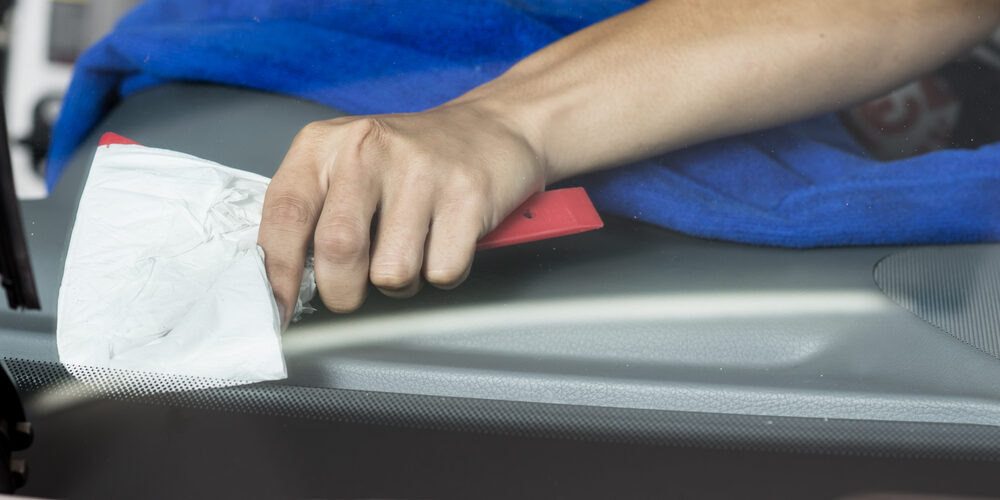The difference between factory tint and regular (aftermarket) tint primarily lies in how and when the tint is applied to the vehicle’s windows…
- Factory Tint
- Factory tint, also known as “privacy glass” or “factory-installed tint,” is applied to the windows during the manufacturing process of the vehicle.
- The tint is typically embedded within the glass itself, either by incorporating tinted glass during the manufacturing of the windows or by applying a tinted film to the inside surface of the glass before it is installed in the vehicle.
- Factory tint is often applied to the rear windshield and side windows, but it may vary depending on the vehicle’s make, model, and trim level.
- Factory tint usually offers a uniform appearance and higher quality compared to aftermarket tint, with better integration into the glass and resistance to peeling, bubbling, or discoloration over time.
- Regular (Aftermarket) Tint
- Regular or aftermarket tint is applied to the vehicle’s windows after it has been manufactured and sold.
- Aftermarket tint is typically installed by a professional tint installer using tinted film that is applied to the inside surface of the windows.
- Aftermarket tint comes in various shades, colors, and materials, allowing for customization based on the customer’s preferences and needs.
- Aftermarket tint may vary in quality, appearance, and durability depending on the installer’s expertise, the quality of the tint film used, and the installation process.
The main differences between factory tint and regular tint are the timing and method of application. Factory tint is applied during the manufacturing process and is often integrated into the glass itself, while regular tint is applied after the vehicle has been manufactured using tinted film installed by a professional. Each type of tint has its advantages and considerations, and the choice between factory and aftermarket tint depends on factors such as personal preference, budget, and specific needs.






